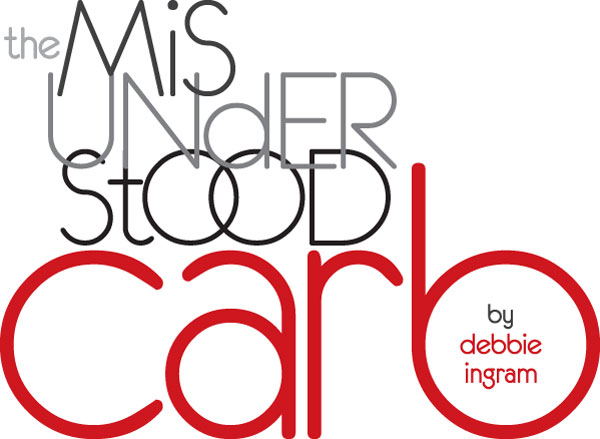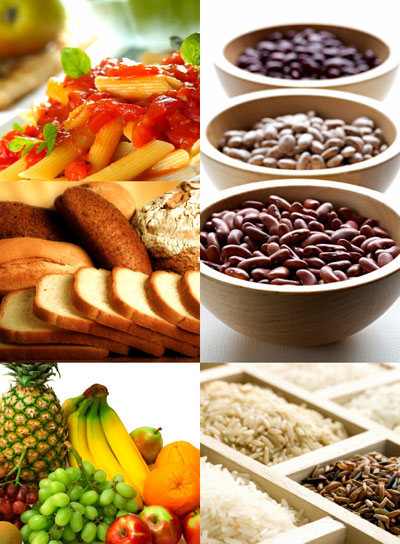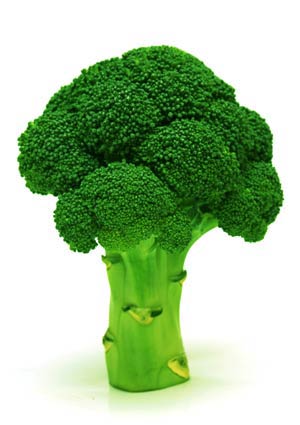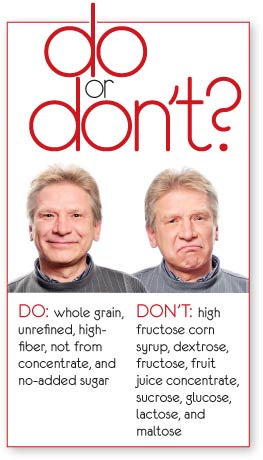
Carbohydrates have been getting a bad rap for some time now. Diet trends like The Zone, Atkins, and South Beach, are all telling us to cut out the carbs. Unfortunately, we’re drawn to their irresistible good looks, taste, and even smell. We can’t diet with them, but we can’t live without them.
But hold on. Perhaps if we understood our carbs a little better, we might actually see that they’re not all diet-rebels. Joy Semelka, MS, RD, a registered nurse with Dia-Trition, a company that offers programs in weight management, diabetes education, and nutrition therapy, agrees that people really don’t understand carbohydrates and low-carb diets.
“A patient will tell you they are watching carbs and wouldn’t think of touching a potato or banana,” she says, “and then turn around and tell you they ate a candy bar.”
According to Semelka, when choosing a low-carb diet, the weight loss is temporary and most people eventually include carbs back into their diet. She says the key is learning how to eat healthfully for the rest of your life. And that begins with knowing what you’re eating.

All foods are classified as sources of carbohydrates, fats, or proteins. While protein and fat come mostly from animal and dairy sources, carbs come primarily from fruits, vegetables, and grains. These nutrients supply the energy, measured in calories, we need to sustain life. Of these three, the carbs are the only nutrient used by the brain for energy. Sounds pretty important, right? And since muscles prefer energy from carbohydrate sources, if you are an active person, a very low-carb diet will leave you feeling benched.
It’s a no-brainer—we need ‘em! So what’s the answer? To carb or not to carb?
 Well, it’s simple, and it’s complex. Carbohydrates are classified as simple sugars or complex carbohydrates. The white sugar or table sugar we use in baking or cooking is a form of simple sugar. Honey, molasses, dextrose, corn syrup, brown sugar, fructose, lactose, and maltose are all ingredients that mean simple sugar. They provide little or no fiber, and digest easily. They are absorbed into the blood quickly, which can be a problem for people who have to watch their blood glucose levels.
Well, it’s simple, and it’s complex. Carbohydrates are classified as simple sugars or complex carbohydrates. The white sugar or table sugar we use in baking or cooking is a form of simple sugar. Honey, molasses, dextrose, corn syrup, brown sugar, fructose, lactose, and maltose are all ingredients that mean simple sugar. They provide little or no fiber, and digest easily. They are absorbed into the blood quickly, which can be a problem for people who have to watch their blood glucose levels.
Complex carbohydrates, on the other hand, provide fiber and take longer to digest. Starchy plants like potatoes, carrots, corn, peas, beans, wheat, and rice provide complex carbohydrates. Although not digestible, cellulose is another form of complex carbohydrate high in fiber. The stems of vegetables like celery and asparagus, and the leaves of cabbage, lettuce, spinach, and broccoli are good forms of cellulose.
Whether simple or complex, your digestive system breaks down all carbs into fuel for our muscles, brain, and other organs. The problem occurs when we eat too many carbohydrates. If you’re eating a lot of processed foods, snacks, cereal, and candy, you are taking in more sugar than someone whose diet consists of whole and unprocessed complex sugars. Too much sugar can lead to weight gain or serious illness. If you have diabetes, metabolic syndrome, or if you have been told to monitor your blood sugar, it is extremely important that you follow the diet prescribed by your physician. Below are some useful tips for choosing foods, reading labels, and understanding nutrients.
• Eat your fiber! For most people, the key is in choosing complex, high-fiber grains, fruits, and vegetables. One of the easiest ways to know if a food is a good choice is by the fiber content. The nutrition label on food packaging usually lists the fiber content under the total carbohydrates. Aim for at least two grams per serving. Three or more is better.
• Look for unprocessed whole grain foods. The more processed a food is, the more likely it is to have a higher fat content, more sugar, and less fiber. White flour, and the products made from it, is more processed than the whole grain variety. The wheat used to make white flour has had the fibrous parts of the grain (the bran and the germ) removed. This is sometimes referred to as a refined grain. Not only does this process lower the fiber content, it also reduces the vitamins and minerals in the flour.
• Don’t be fooled by labels. Just because it says wheat bread, doesn’t mean it’s good for you. Look for the word whole. Whole grain breads, crackers, and pastas are made with flour that has not been stripped of the fibrous components. And it need not be wheat. Flour, and therefore bread, can be made from many different grains, nuts, seeds, and beans including rice, barley, oats, rye, spelt, and corn.
• Choose brown over white. Brown rice has more fiber and important vitamins and minerals than white rice. Your taste buds may not like the rougher texture of brown rice at first, but give it time. Some restaurants now offer brown rice as a side dish; it’s a much better choice than mashed potatoes. With cereal, not only do you want to make sure it’s whole grain; you want to look for cereals that have no sugar added.
• Eat the fruit whole. If the only fruit in your diet is your morning orange juice, you would do better to just eat an orange, which has twice the fiber and half the sugar of a glass of juice. Teach your kids to love whole fruit instead of processed fruit rolls or fruit-filled cookies. Here’s a tip for busy parents: Cut up oranges and melon and store the ready-to-eat fruit right at kids-eye level in the fridge. It’s a healthy snack to tide kids over until mealtime.
 • Beans, beans—the magical vegetable! High in fiber, they are an excellent choice of carbohydrate as well as protein. Beans and peas have a thick, chewy consistency which makes them a great addition to ground beef-based meals. Toss some lentils into the spaghetti sauce and no one will know they’re there. Black beans mix in well with taco meat or blend right into your meatloaf. In addition to the fiber benefits, you’ll consume less meat and therefore cut your fat intake. Beans and peas are also a great topping for salads, rice, and pasta.
• Beans, beans—the magical vegetable! High in fiber, they are an excellent choice of carbohydrate as well as protein. Beans and peas have a thick, chewy consistency which makes them a great addition to ground beef-based meals. Toss some lentils into the spaghetti sauce and no one will know they’re there. Black beans mix in well with taco meat or blend right into your meatloaf. In addition to the fiber benefits, you’ll consume less meat and therefore cut your fat intake. Beans and peas are also a great topping for salads, rice, and pasta.
Eating healthfully takes time and planning. To keep from feeling overwhelmed, make one change at a time. When it comes to converting stubborn family members, patience and persistence are necessary. In Rebel Without a Cause, James Dean’s nemesis, Buzz, uttered the film’s most famous line, “You’ve got to do something.” We all must do something to better educate ourselves and our children if we are ever to conquer obesity.






